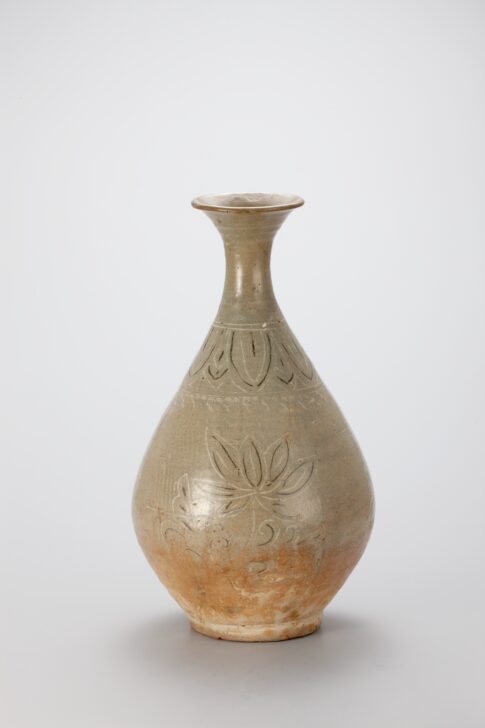Pear-shaped bottle with inlaid design of large lotus blossoms
Korean

Description
In this bottle, the inlaid designs seem haphazard and the quality of the glazing is inferior—even if we ignore the loss of glaze at the foot. The overall design scheme for this vessel is derived from Yuan (Mongol) dynasty (1279–1368) prototypes, with a single, expansive motif at the widest part of the jar, and a band of overlapping, downward-facing petals marking the transition to the neck.
Traditionally, works like this one have been regarded as representing the decline of celadons under Mongol dominance. It is equally valid, however, to see this work as part of a transitional and necessary phase as potters broke away from the constraints of the Goryeo style. Within another century, this awkwardness will be transformed into the bold, free designs of buncheong ware.
Maribeth Graybill, The Enduring Art of the Korean Potter, December 12, 2004-November 6, 2005
Physical Description:
The long neck, curvilinear body, and ared mouth of this vessel create a typical Goryeo celadon bottle. A band of lotus petals inlaid with black and white slips is wrapped around the lower part of the neck, below which is a yeoui-head band inlaid with white slip. Three places around the belly of the bottle are decorated with lotus sprays inlaid with black and white slips. The glaze on the lower part of the body has been oxidized, where it is also extensively cracked. The foot is low, with a wide rim, and has sand spur marks.
[Korean Collection, University of Michigan Museum of Art (2014) p.143]
Usage Rights:
If you are interested in using an image for a publication, please visit https://umma.umich.edu/request-image/ for more information and to fill out the online Image Rights and Reproductions Request Form.